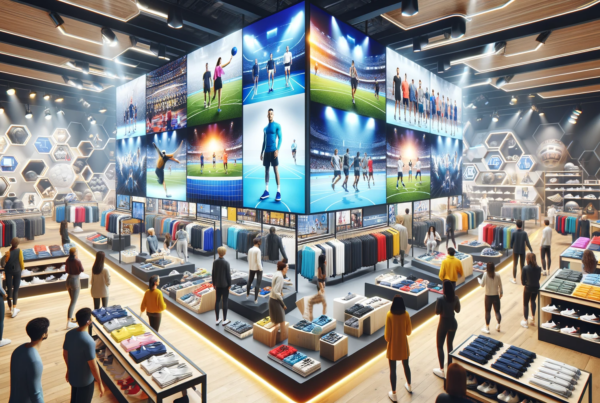Elevate Workplace Satisfaction with Commercial Video Programming in Private Offices
In the modern business landscape, the transformation of private offices into dynamic and engaging spaces is more than just a trend—it’s a necessity. Integrating commercial video programming into the private office setting is not just about providing entertainment; it’s about creating an environment that fosters productivity, innovation, and employee satisfaction. This comprehensive guide delves into the myriad ways in which commercial video programming can revolutionize private offices, offering unique insights into its implementation and the benefits it brings.
As business leaders and office managers seek to enhance their workspaces, the inclusion of diverse entertainment options through commercial video programming has emerged as a powerful tool. This strategy not only enriches the office atmosphere but also serves as a catalyst for improved morale and a more connected company culture. In this exploration, we will uncover the practical advantages of deploying video content within the private office domain, and how it can lead to a more satisfied and engaged workforce.
By embracing the concept of transforming private offices with commercial video programming, businesses can tap into a wealth of opportunities to elevate their brand, attract top talent, and maintain a competitive edge. Join us as we navigate the intricacies of this transformation and present actionable steps for businesses ready to embark on this journey towards a more vibrant and fulfilling workplace.
Understanding the Impact of Video Programming in Private Offices
The integration of commercial video programming into the private office sphere is a multifaceted process that entails more than just the installation of screens and selection of content. It involves a strategic approach to content curation, technological setup, and alignment with company values and goals. To fully comprehend the impact of video programming, it is crucial to recognize its potential to enhance the office environment, support employee well-being, and contribute to a culture of continuous learning and development.
One of the primary benefits of incorporating video programming is the positive effect it has on employee engagement. With curated content that resonates with the team’s interests and professional aspirations, employees are more likely to feel valued and invested in their work environment. This can lead to increased job satisfaction, reduced turnover rates, and a stronger sense of belonging within the organization.
Moreover, commercial video programming can serve as a platform for knowledge sharing and skills development. Educational and industry-related content can stimulate intellectual curiosity and foster a culture of innovation. By providing access to the latest trends, insights, and expert opinions, businesses can empower their employees to stay ahead of the curve and contribute meaningfully to the company’s growth.
Strategies for Implementing Video Programming in the Workplace
Implementing commercial video programming in private offices requires a thoughtful strategy that considers the unique needs and preferences of the workforce. It begins with identifying the types of content that will resonate most with employees, such as industry news, motivational talks, or skill-building workshops. The next step involves choosing the right technology and platforms to deliver this content seamlessly and efficiently.
Businesses must also establish guidelines for content consumption to ensure that it complements work routines without causing distractions. This might include scheduling specific times for video breaks, creating dedicated viewing areas, or integrating content into team-building activities. By setting clear parameters, companies can maximize the benefits of video programming while maintaining productivity.
Another critical aspect of implementation is measuring the effectiveness of video programming. Regular feedback sessions with employees, analytics tracking, and performance reviews can provide valuable insights into the content’s impact on workplace satisfaction and productivity. These metrics can then be used to refine the programming strategy, ensuring that it continues to meet the evolving needs of the office and its inhabitants.
Case Studies: Success Stories of Video Programming in Offices
Examining real-world examples of commercial video programming in private offices can offer a wealth of knowledge and inspiration for businesses considering this transformation. Case studies of companies that have successfully integrated video content into their workspaces can highlight best practices, common challenges, and the tangible benefits experienced by their teams.
For instance, a tech startup may share how incorporating TED Talks into their weekly meetings has sparked creativity and encouraged innovative thinking. Alternatively, a law firm might reveal how streaming legal seminars has kept their staff up-to-date with industry regulations and fostered a culture of continuous learning.
These success stories serve as powerful testimonials to the potential of commercial video programming to transform private offices. They provide a blueprint for other organizations looking to replicate similar results and underscore the importance of a well-executed strategy in achieving workplace satisfaction through video content.
Conclusion: The Future of Private Offices with Video Programming
The landscape of private offices is undergoing a significant shift, with commercial video programming at the forefront of this change. As businesses continue to explore new ways to engage and satisfy their employees, the role of video content in the office environment will only grow in importance. By staying informed about the latest trends and best practices, companies can ensure that they are well-positioned to leverage the power of video programming to create a more dynamic, fulfilling, and productive workplace.
As we look to the future, it is clear that the integration of commercial video programming into private offices will play a pivotal role in shaping the way we work. With its ability to enhance the office atmosphere, support employee development, and foster a connected culture, video content is poised to become an essential component of the modern office. For businesses ready to embrace this transformation, the opportunities are vast, and the potential for positive change is immense.








